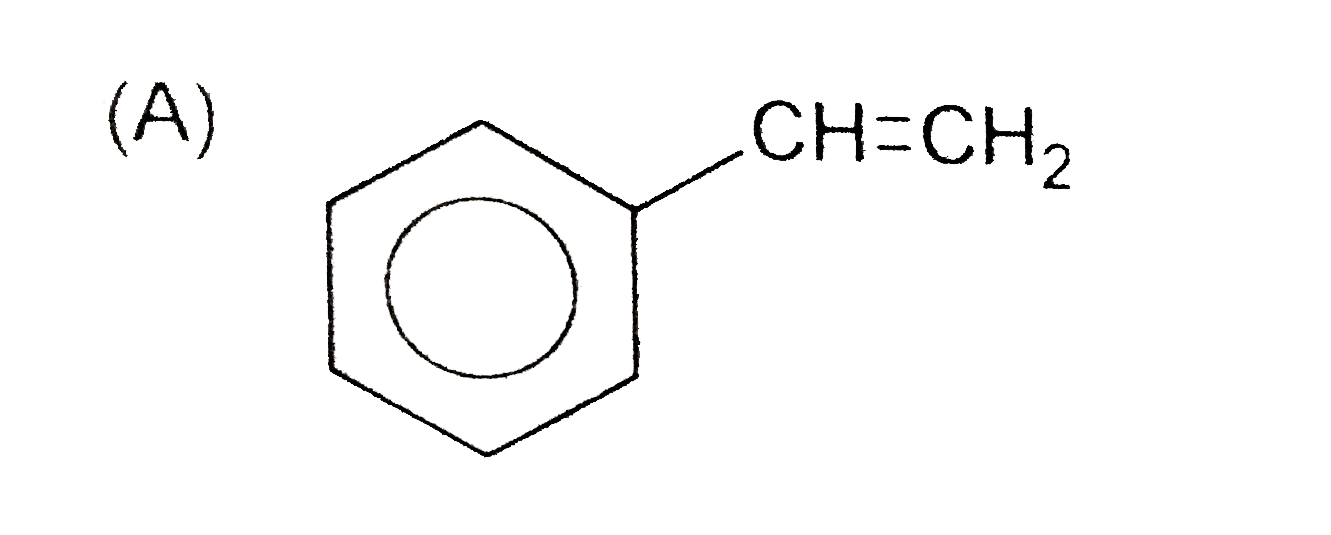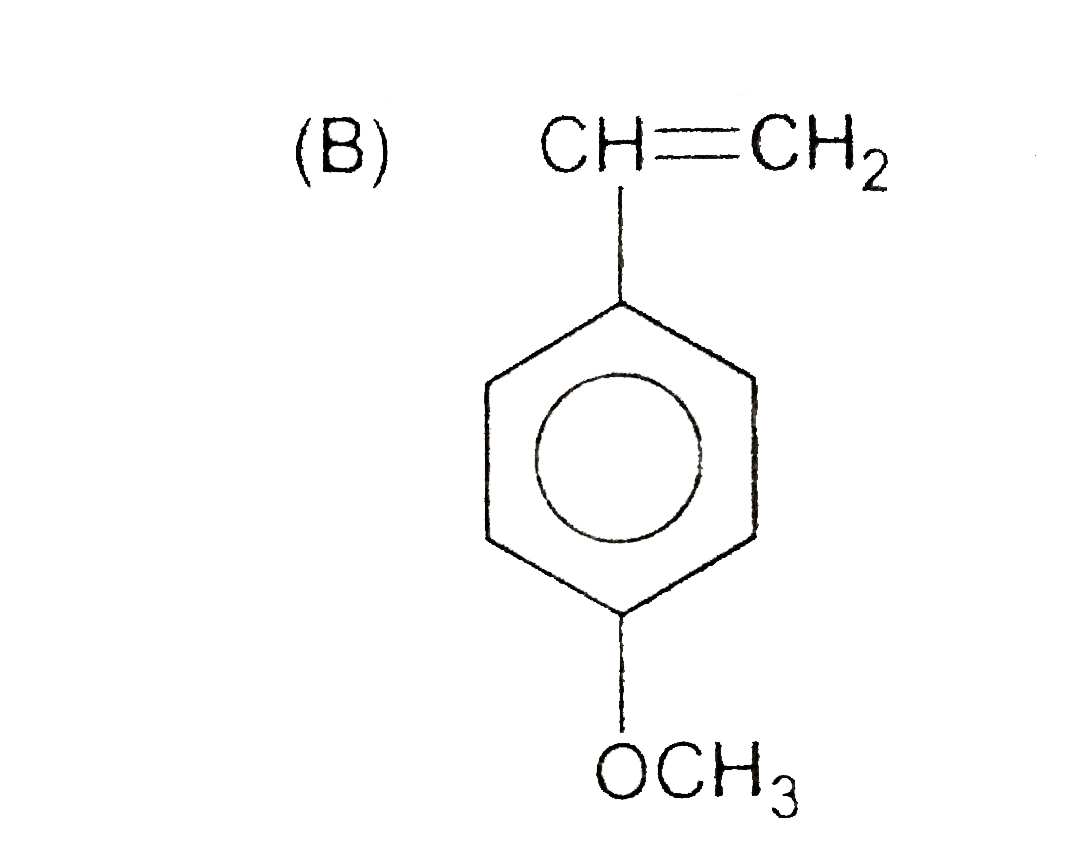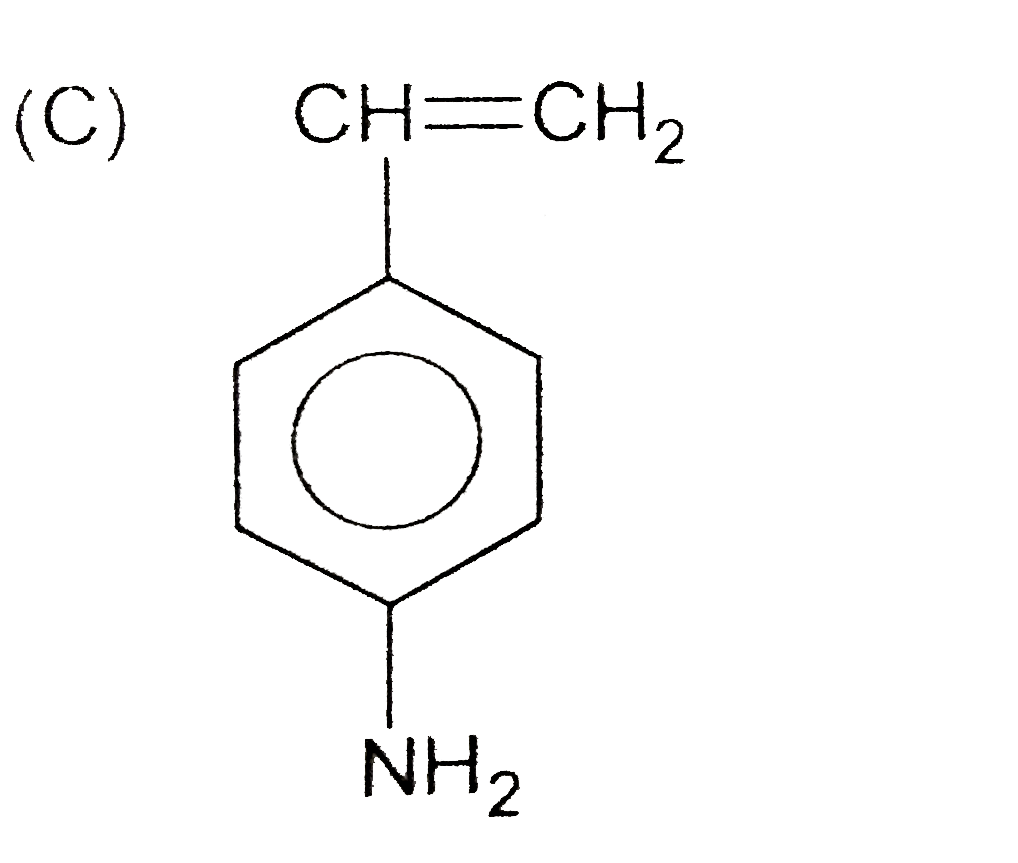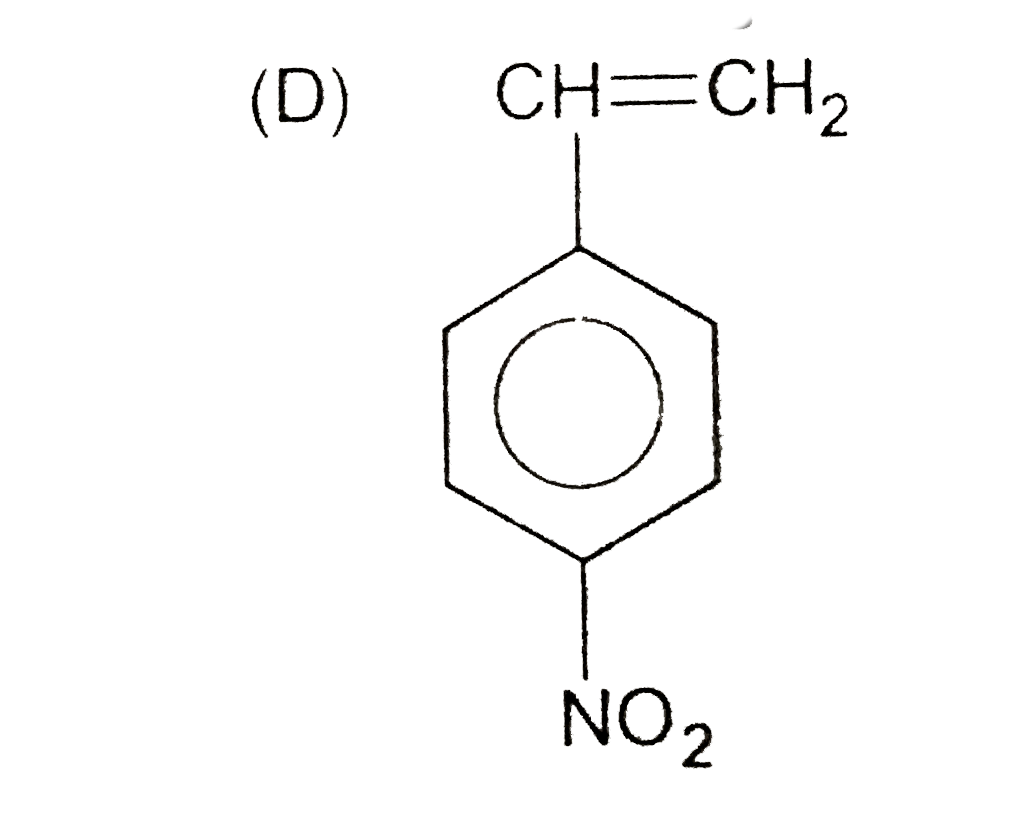Which of the following monomers has greatest ability to undergo cationic polymerisation?




The correct Answer is:C
To determine which monomer has the greatest ability to undergo cationic polymerization, we need to analyze the stability of the carbocations formed during the polymerization process. The stability of a carbocation is influenced by the presence of electron-donating or electron-withdrawing groups attached to the carbon chain. Here’s a step-by-step solution:
Step 1: Identify the Monomers
Let's assume we have four monomers to analyze:
1. Monomer A: Benzene ring with a substituent that does not stabilize the carbocation.
2. Monomer B: Benzene ring with an OCH3 (methoxy) group.
3. Monomer C: Benzene ring with a substituent that donates electrons (e.g., an alkyl group).
4. Monomer D: Benzene ring with an NH2 (amino) group.
Step 2: Analyze the Stability of Carbocations
- Monomer A: The carbocation formed here is not stabilized by any electron-donating groups, making it less reactive.
- Monomer B: The OCH3 group is a +M (mesomeric) group, which can stabilize the carbocation through resonance. However, it also has a -I (inductive) effect that can slightly destabilize the carbocation.
- Monomer C: This monomer has an electron-donating group (like an alkyl group) that stabilizes the carbocation significantly. Alkyl groups are known to provide +I (inductive) effects, increasing carbocation stability.
- Monomer D: The NH2 group is a +M group, which stabilizes the carbocation through resonance. However, it also has a -M effect that can withdraw electron density from the ring, potentially destabilizing the carbocation.
Step 3: Compare the Reactivity
The stability of the carbocation directly correlates with its reactivity in cationic polymerization:
- The more stable the carbocation, the more likely it is to undergo polymerization.
- Monomer C, with its strong electron-donating group, will create a highly stable carbocation, making it the most reactive in cationic polymerization.
Conclusion
Based on the analysis, the monomer with the greatest ability to undergo cationic polymerization is Monomer C, due to the presence of a strong electron-donating group that stabilizes the carbocation.
---
Let's assume we have four monomers to analyze:
1. Monomer A: Benzene ring with a substituent that does not stabilize the carbocation.
2. Monomer B: Benzene ring with an OCH3 (methoxy) group.
3. Monomer C: Benzene ring with a substituent that donates electrons (e.g., an alkyl group).
4. Monomer D: Benzene ring with an NH2 (amino) group.
- Monomer A: The carbocation formed here is not stabilized by any electron-donating groups, making it less reactive.
- Monomer B: The OCH3 group is a +M (mesomeric) group, which can stabilize the carbocation through resonance. However, it also has a -I (inductive) effect that can slightly destabilize the carbocation.
- Monomer C: This monomer has an electron-donating group (like an alkyl group) that stabilizes the carbocation significantly. Alkyl groups are known to provide +I (inductive) effects, increasing carbocation stability.
- Monomer D: The NH2 group is a +M group, which stabilizes the carbocation through resonance. However, it also has a -M effect that can withdraw electron density from the ring, potentially destabilizing the carbocation.
The stability of the carbocation directly correlates with its reactivity in cationic polymerization:
- The more stable the carbocation, the more likely it is to undergo polymerization.
- Monomer C, with its strong electron-donating group, will create a highly stable carbocation, making it the most reactive in cationic polymerization.
Based on the analysis, the monomer with the greatest ability to undergo cationic polymerization is Monomer C, due to the presence of a strong electron-donating group that stabilizes the carbocation.
Similar Questions
In cationic polymerizalion, the initiator is an electrophile that adds to the alkene, causing it to become a cation. The Initiator most often used in cationic polymerization is a lewis acid. Such as BF3 or AICI3 and in anionic polymerization, the iniliator is a nucleophile that reacts with the alkene to form a propagating site that is an anion.
Arrange the following group of monomers of decreasing ability to undergo cationic polymerization

View SolutionWhich of the following is greatest ?
View Solution
Knowledge Check
Which of the following cation would have greatest stability?
ACH3−..S..−⊕CH2B CCH3−..O..−⊕CH2D:..F..−⊕CH2
CCH3−..O..−⊕CH2D:..F..−⊕CH2Which of the following monomers would be most reactive towards cationic polymerization?
Aa. CH2=CHCH3Bb. CH2=CHClCc. CH2=CHC6H5Dd. CH2=CHCOOCH3Which of the following alkenes is the most reactive towards cationic polymerisation ?
ACH2=CHCH3BH2=CHCICH2C=CHC6H5DH2C=CHCO2CH3
Which of the following is the greatest?
View SolutionWhich of the following has the greatest angle strain ?
View SolutionWhich of the following has greatest affinity for haemoglobin ?
View Solutionwhich of the following is the greatest?
View SolutionWhich of the following has least tendency to undergo catenation ?
View Solution
